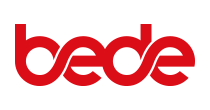In Retrospect - Making Retros Great Again
Language: en As time goes on, do you feel like retrospectives have become boring, uninspiring and less effective? Does it seem like the team are going through the motions? Are retrospectives an hour of moaning, with nothing ever changing? Does it feel like these 'Agile' ways of working just aren't delivering what was promised?
Let's start from the ground up and fix this for good.
Retrospectives are crucial to self-improving teams. To really make them shine, we'll delve into the surprising cross-disciplinary history of retrospectives, gaining an appreciation of the power we can harness.
We'll talk about psychological safety - how to make sure that retrospectives are inclusive and diverse sessions where everyone is comfortable to contribute.
We'll detail the structure of a retrospective and how we can go beyond the traditional three acts of "what went well, what didn't, what can we do better", choosing activities that generate powerful insights, establish common understanding and focus on building meaningful change.
Finally, we'll talk about how we can make sure the actions raised during a retrospective actually get done. This goes beyond making 'SMART' objectives, focusing on the psychology of change, highlighting where we can go awry and how to stay on track through guiding principles.
You'll learn how to create fun retrospectives and you'll leave with a renewed sense of focus and passion for improving how we work together, to build great things.
Sam Hogarth Tesco Bank
Sam is fascinated with making teams work together better, and keeping up with the ever-changing world of software engineering. He has a decade's worth of experience in highly-regulated environments, across finance, biotech and energy. Whether it's mobile, desktop, web, server or cloud, he has the battle scars. In his spare time, he can run a fine game of Dungeons and Dragons!
